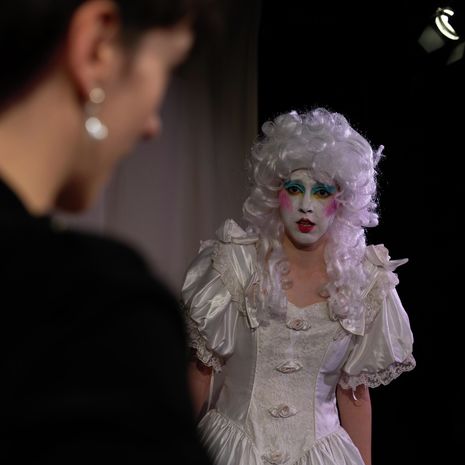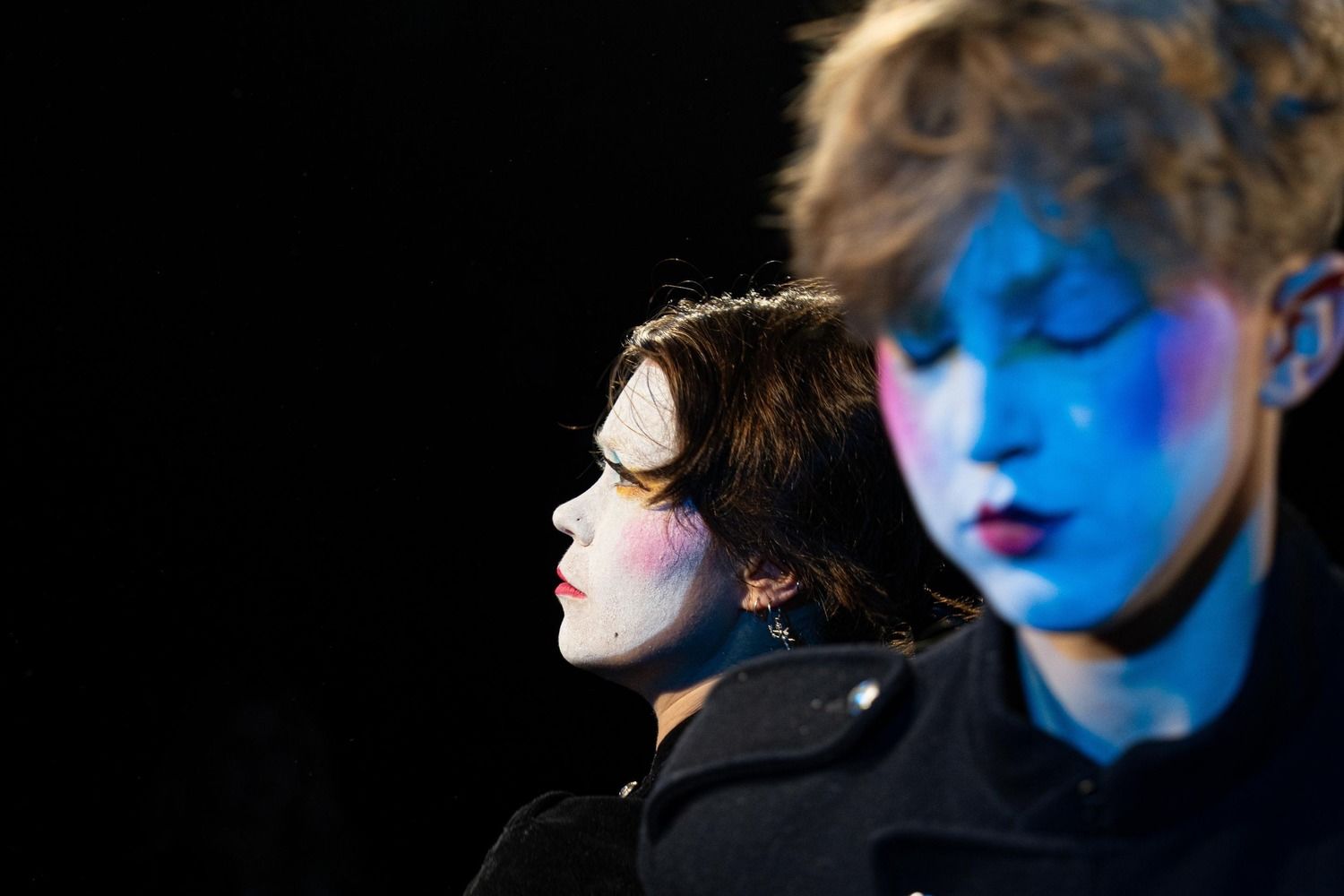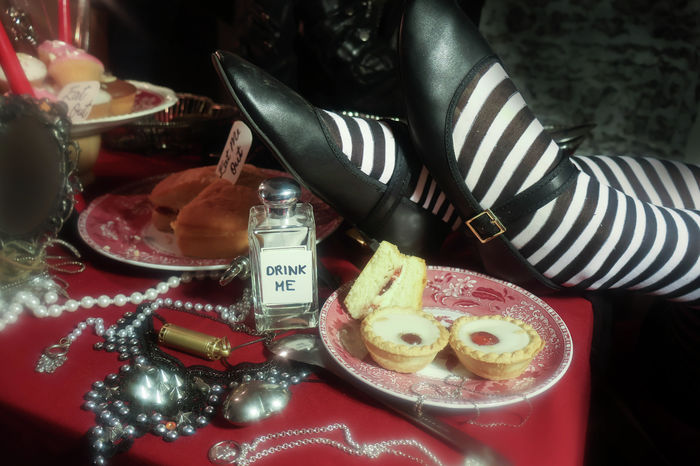If you’ve been to see Eva Sharkey’s Orlando at the Corpus Playroom this week, you will know just how visually mesmerising the show’s costumes are. When I first witnessed Esther Crasnow-Dodd’s designs, I must admit that I struggled to drag my eyes away from them like a magpie attracted to all the shiny pearls onstage. Much like the performance itself, the costumes love to play with gender. But what is it that makes them so subversive?
“So much of it is about gender as performance and as something that is not static,” Crasnow-Dodd enthusiastically explains. “My fashion references are very theatrical, over the top. I’m not interested in subtlety, as anyone who watches the play can see.” And I have to agree: subtle is most definitely not a word I would use to describe the show’s style, and for good reason. Orlando’s costume and makeup design is bold, vibrant and distinct in a truly charming way.
“I’m not interested in subtlety, as anyone who watches the play can see”

It’s impossible to deny it: the costumes are visually stunning. This is especially impressive when considering, of course, that budget restrictions always make it trickier to fill any performance wardrobe. Still, Crasnow-Dodd refuses to let a lack of spare cash get in the way. In fact, she finds freedom in it.
“When you have a costume budget, it’s difficult, but I find that it invites a lot of creativity. My favourite costume in the whole play is the one I made for Queen Elizabeth. I knew what kind of silhouette I wanted.”
To make the budget work, Crasnow-Dodd repurposed items already floating around in the personal wardrobes of cast members, such as “Flossie’s corset”, and “old clothes that I’ve been finding at car boot sales, or, like, old second-hand shops”.
Most importantly for Queen Elizabeth’s look, they described how “Two nights before, I was panicking about what the outfit was going to look like and then I just got all these safety pins and started pinning all these pearls on at like 10 pm.” Emphasising the importance of the “chaotic DIY aspect” to the overall process, they tell me how they “ravaged the charity shops of Cambridge for pearl jewellery”. Considering the spectacular amount of pearls Queen Elizabeth is wearing in the performance, I imagine Cambridge’s charity shops will be yet to recover from this jewellery heist for quite some time.

With costumes so exaggerated and daring, I am especially interested in asking Crasnow-Dodd how her costume design reflects the idea of gender performativity, a theme that dominates the performance. When I approach this topic, they stress the play’s relevance as “an inherently trans narrative” within the current political climate in which there has been “so much transphobic sentiment” and “this emphasis on biological sex”.
“It’s really important to have these community spaces where we’re uplifting each other, making art together”
As we chat about this, they emphasise that “There is no place for transphobia in this play,” both on and offstage, and discuss the sense of togetherness the project has fostered amongst cast and crew. “It’s really important to have these community spaces where we’re uplifting each other, making art together,” they say. The show’s costuming, as well as its drag-inspired makeup, visually conveys this sentiment to the audience with both sensitivity and so much joy. It’s a delight to see.

And when it comes to makeup, Crasnow-Dodd credits the director, Eva Sharkey, with inspiring the show’s strikingly bold looks. For Sharkey, putting Luke Quentin as the Officer and Flossie Adrian as the Captain in drag was more than a simple stylistic choice.
“Not only is it visually striking, the point of that scene was to have two military men come on stage and represent this kind of, like, hyper masculinity where they’re misogynistic, repressed, they don’t understand their own sexuality,” Sharkey explains to me. “They have this kind of patriarchal sexuality. But then it’s all done in drag, so it completely subverts the tone. It makes it absolutely absurd.”
“I am also blown away by the drag worn by Orlando’s wonderfully campy iteration of the queen”
As Flossie Adrian multi-roles as the Captain and Queen Elizabeth I, their makeup remains consistent across the two characters. Much like Crasnow-Dodd, who found costuming for Elizabeth I to be their favourite, I am also blown away by the drag worn by Orlando’s wonderfully campy iteration of the queen. Adrian’s painted white face resembles a theatrical mask, hammering home the show’s themes of performativity.
“I’m really interested in Queen Elizabeth in terms of their femininity and the idea of the masculinised queen, because she was in a role that wasn’t built for her – she had to shape it for herself,” Sharkey says. “I like the symbolism of the mask kind of makeup, and I like all the allusions to queerness that come with it.”
The combined devotion of Sharkey and Crasnow-Dodd to Orlando has created a beautiful costume and makeup style for the performance that is not only visually appealing but also reflects a true celebration of queerness. Esther Crasnow-Dodd’s concluding expression that “What started with a love for dressing up myself now belongs to this community of people making a show,” summarises this spirit perfectly.


